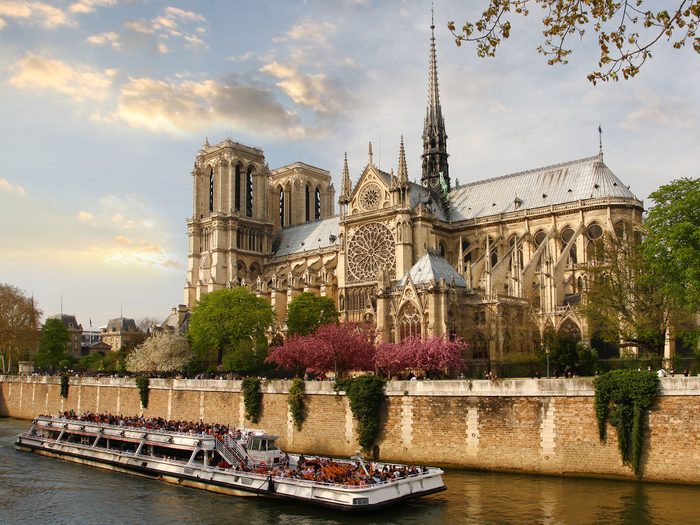
1. Notre-Dame
The heart of France, both geographically and spiritually, the Cathedral of Notre-Dame is a natural choice to kick off our list of top 10 things to do in Paris. After Pope Alexander III laid the foundation stone in 1163, an army of craftsmen toiled for 170 years to realize Bishop Maurice de Sully’s magnificent design. Almost destroyed during the French Revolution, the Gothic masterpiece was restored in 1841-64 by architect Viollet-le-Duc. Some 130 metres in length with a high-vaulted nave and double side aisles, it also contains France’s largest organ.
Must-See at the Cathedral of Notre-Dame: Portal of the Virgin is a splendid stone tympanum carved in the 13th century and shows the Virgin Mary’s death and glorious coronation in heaven. However, the Virgin and Child carving seen between the doors is a modern replica.
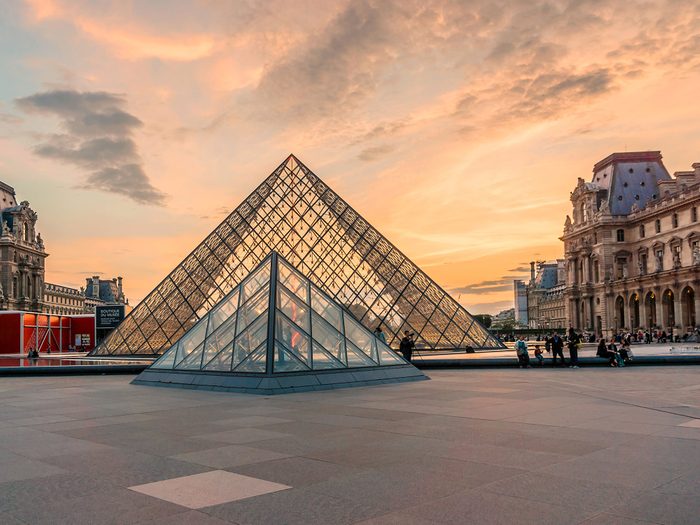
2. Musee du Louvre
One of the world’s most impressive museums, the Louvre contains some 35,000 priceless objects. Built as a fortress by King Philippe-Auguste in 1190, Charles V (1364-80) was the first king to make it his home. In the 16th century Francois I replaced it with a Renaissance-style palace and founded the royal art collection with 12 paintings from Italy. Revolutionaries opened the collection to the public in 1793. Shortly after, Napoleon renovated the Louvre as a museum.
Must-See at the Musee du Louvre: Mona Lisa is arguably the most famous painting in the world, and Leonardo da Vinci’s portrait of the woman with enigmatic smile has been beautifully restored. Visit early or late in the day.
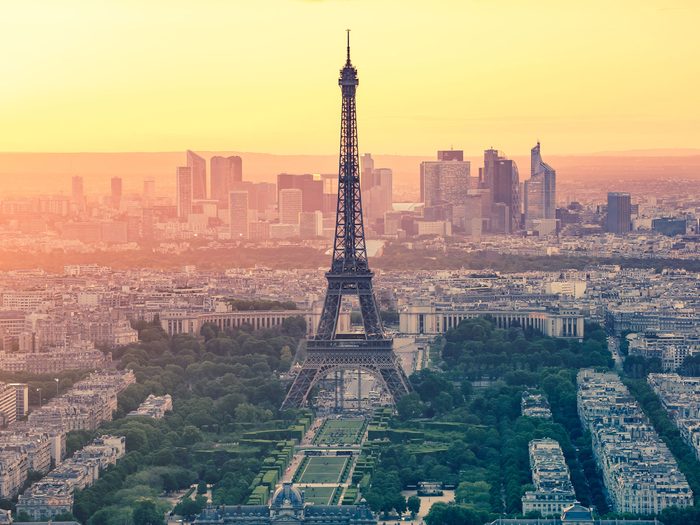
3. Eiffel Tower
The most distinctive symbol of Paris, the Eiffel Tower (Tour Eiffel) was much maligned by critics when it rose on the city’s skyline in 1889 as part of the Universal Exhibition, but its graceful symmetry soon made it the star attraction. At 312 metres high, it was the world’s tallest building until it was surpassed by New York’s Empire State Building in 1931. Despite its delicate appearance, it weighs 10,100 metric tons and engineer Gustave Eiffel’s construction was so sound that it never sways more than 9 cm in strong winds.
Must-See at the Eiffel Tower: A 200,000-watt lighting system makes the Eiffel Tower the most spectacular night-time sight in Paris. It sparkles like a giant Christmas tree for 5 minutes every hour from dusk until 1 a.m.
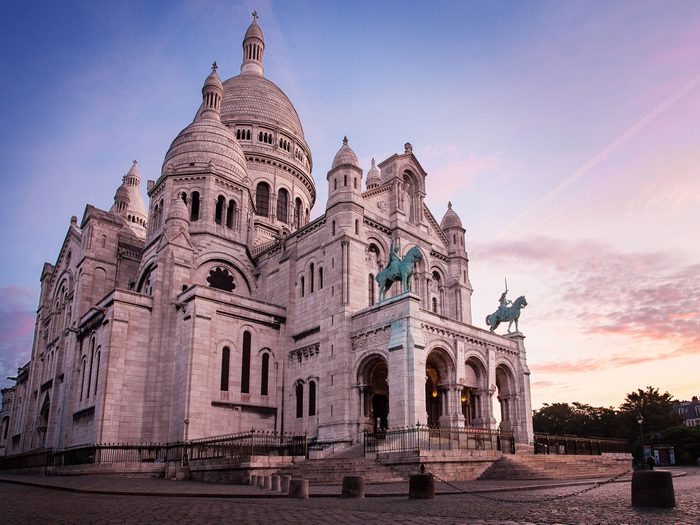
4. Sacre-Coeur
One of the most photographed images of the city, the spectacular white outline of Sacre-Coeur (Sacred Hearth) watches over Paris from its highest point. The basilica was built as a memorial to the 58,000 French soldiers killed during the Franco-Prussian War (1870-71) and took 46 years to build, finally completed in 1923 at a cost of 40 million francs (6 million euros). Priests still pray for the souls of the dead here 24 hours a day. Although the interior is less impressive than many other churches in the city, people flock here for panoramic views-at sunset, in particular, there are few sights in Paris more memorable.
Must-See at Sacre-Coeur: One level of the great dome is encircled by stained-glass windows. From here there is a grand view over the whole interior.
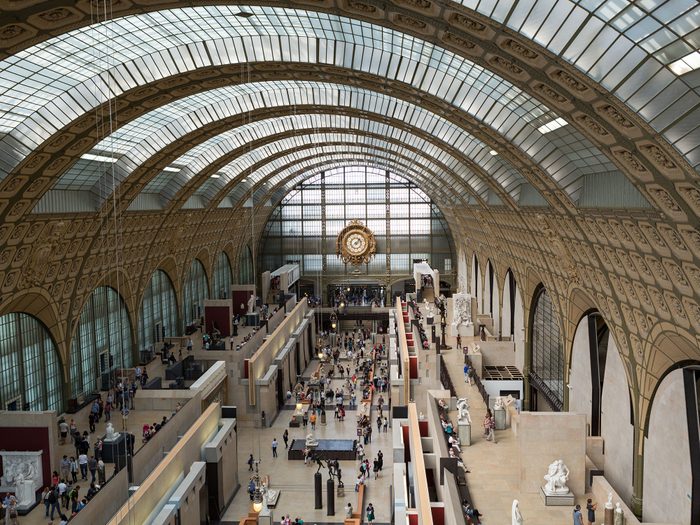
5. Musee d’Orsay
This wonderful collection covers a variety of art forms from the 1848-1914 period, including a superb impressionists section. Its setting, in a converted railway station, is equally impressive. Built in 1900, in time for the Paris Exposition, the station was in use until 1939, when it was closed and largely ignored, bar its use as the location of Orson Welles’ 1962 film, The Trial. It was later used as a theatre and as auction rooms, and in the mid-1970s was considered for demolition. In 1977, the Paris authorities decided to save the imposing station building by converting it into this striking museum.
Must-See at Musee d’Orsay: The star of the collection is Vincent Van Gogh, (1853-90), and the most striking of the canvases on display is the 1889 work showing the artist’s Bedroom at Arles. Also on display are self-portraits, painted with the artist’s familiar intensity.
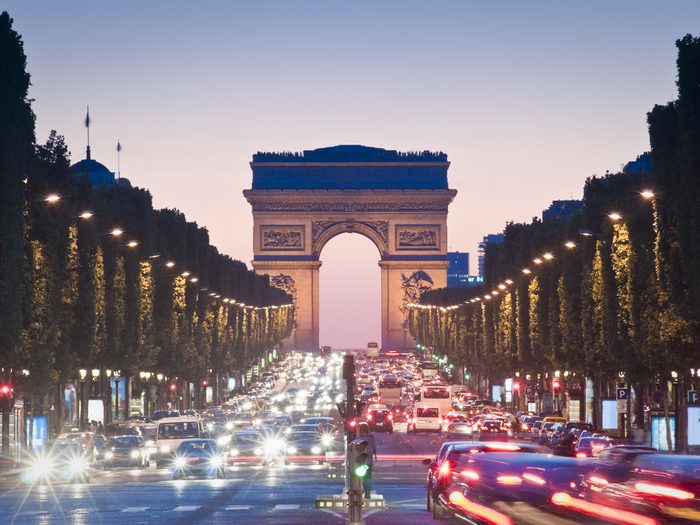
6. Arc de Triomphe
The best day to visit the world’s most familiar arch is 2 December, the date that marks Napoleon’s victory at the Battle of Austerlitz in 1805, when the sun, setting behind the Champs-Elysees and the Arc de Triomphe, creates a spectacular halo around the building. Work began on the 50 metre arch in 1806 but was never completed until 1836, due, in part, to Napoleon’s fall from power. Four years later, Napoleon’s funeral procession passed beneath it, on its way to his burial in Les Invalides. Today the arch is a focal point for numerous public events.
Must-See at Arc de Triomphe: Taking the elevator or climbing the 284 steps to the top of the Arc de Triomphe gives visitors a sublime view of Paris. To the east is the magnificent Champs Elysees and to the west is the Grande Arche of La Defense. (Note that after the lift there are still some 40 steps to climb.)
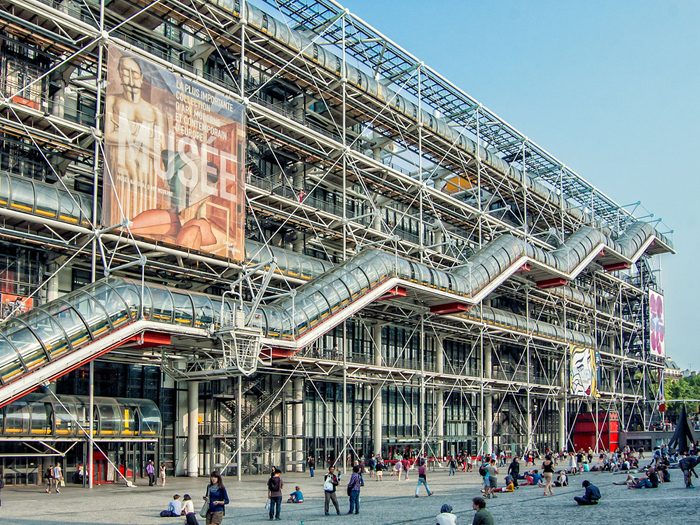
7. Centre Georges Pompidou
Today one of the world’s most famous pieces of modern architecture, the Pompidou Centre opened in 1977, when architects Richard Rogers and Renzo Piano startled everyone by turning the building “inside out”, with brightly coloured pipes displayed on the façade. Designed as a cross-cultural arts complex, it houses the excellent Musee National d’Art Moderne (Modern Art Museum) as well as a cinema, library, shops and performance space. The outside forecourt is a popular gathering-spot for tourists and locals alike.
Must-See at Centre Georges Pompidou: The colourful Stravinsky Fountain in Place Igor Stravinsky was designed by Niki de Saint-Phalle and Jean Tinguely as part of the Pompidou Centre development. Inspired by composer Stravinsky’s ballet The Firebird (1910), the bird spins and sprays water!
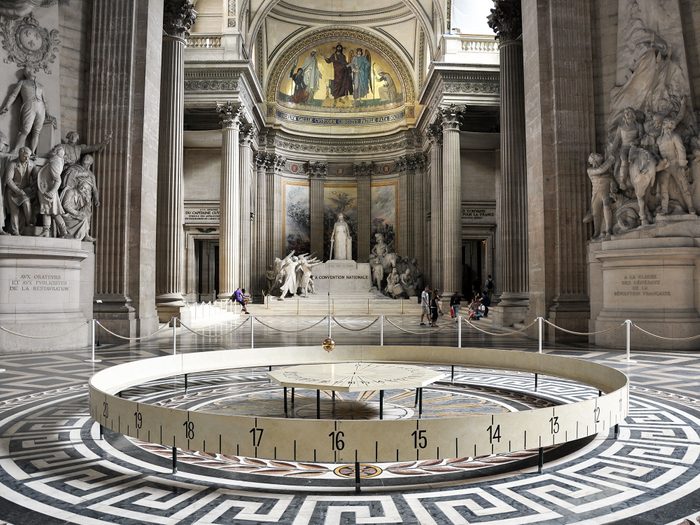
8. The Pantheon
Today the city’s beautiful Pantheon building is a fitting final resting place for the nation’s great figures. However, it was originally built as a church on the instigation of Louis XV to celebrate his recovery from a serious bout of gout in 1744. Dedicated to Sainte Genevieve, the structure was finished in 1790 and was intended to look like the Pantheon in Rome, hence the name; in fact it more closely resembles St.Paul’s Cathedral in London. During the Revolution it was turned into a mausoleum, but Napoleon gave it back to the church in 1806. It was later deconsecrated, handed back to the church once more, before finally becoming a public building in 1885.
Must-See at the Pantheon: In 1851 French physicist Jean Foucault followed up an earlier experiment to prove the earth’s rotation by hanging a pendulum from the dome of the Pantheon. The plane of the pendulum’s swing rotated 11º clockwise each hour in relation to the floor, thereby proving Foucault’s theory.
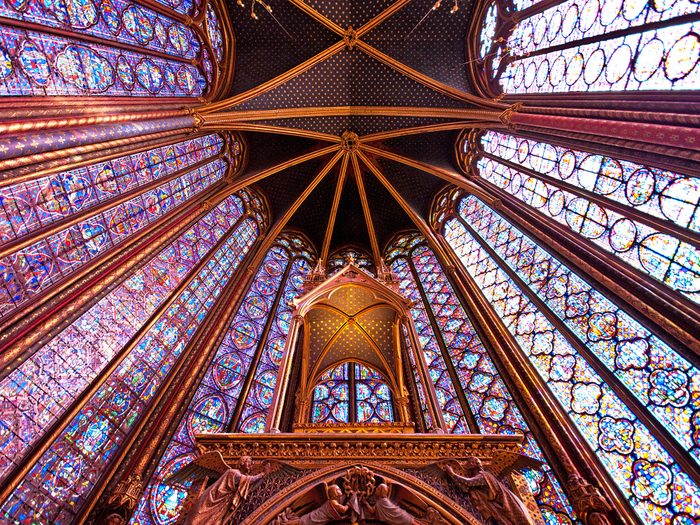
9. Sainte-Chapelle
This Gothic masterpiece, built by Louis IX (1214-70) as a shrine for his holy relics of the passion and completed in 1248, is considered the most beautiful church in Paris, not least for its 15 stained-glass windows soaring 15 metres to a star-covered vaulted roof. The church was damaged during the Revolution but restored in the mid-19th century.
Must-See Site: In the late 14th century Louis XI added an oratory where he could attend Mass unobserved, watching through a small grille in the wall. The chapel originally adjoined the Conciergerie, the former royal palace on the lle de la Cite
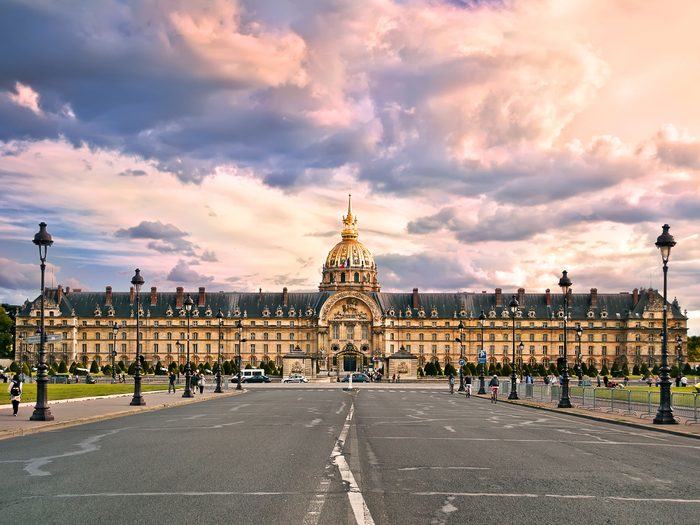
10. Hotel des Invalides
The “invalides” for whom this imposing Hotel was built were wounded soldiers of the late 17th century. Louis XIV had the building constructed between 1671 and 1678, and veterans are still housed here, although only a dozen or so compared to the original 6,000. They share their home with the greatest French soldier of them all, Napoleon Bonaparte, whose body rests in a crypt directly below the golden dome of the Dome Church. Other buildings accommodate military offices, the Musee de l’Armee and smaller military museums.
Must-See at Hotel des Invalides: Visit Napoleon’s Tomb, where his body was brought from St. Helena in 1840, some 19 years after he died. He rests in splendid grandeur in a cocoon of six coffins, almost situated “on the banks of the Seine” as was his personal wish.